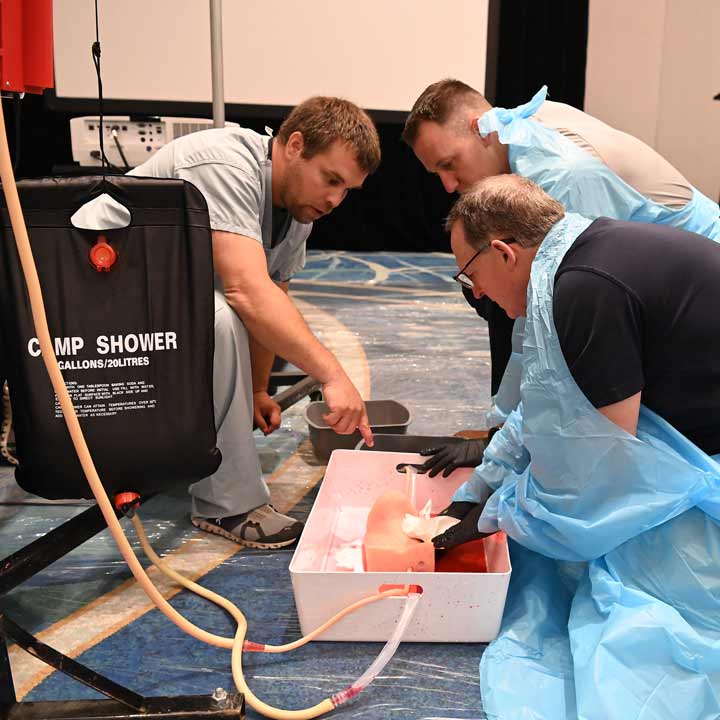 Two head and neck surgeons with The Ohio State University Wexner Medical Center have teamed up with the National Hockey League (NHL) to educate trainers and team physicians on managing traumatic neck injuries.
Two head and neck surgeons with The Ohio State University Wexner Medical Center have teamed up with the National Hockey League (NHL) to educate trainers and team physicians on managing traumatic neck injuries.
Kyle VanKoevering, MD, associate professor of Otolaryngology – Head and Neck Surgery, and Catherine Haring, MD, assistant professor of Head and Neck Surgical Oncology and Microvascular Reconstruction, focus primarily on oncology surgical cases of the head and neck. Dr. VanKoevering is also the faculty director of the Medical Modeling, Materials and Manufacturing (M4) Division of the Center for Design and Manufacturing Excellence within The Ohio State University College of Engineering.
“We do a lot of different things in the lab,” Dr. VanKoevering says, “but one thing we’ve been doing over the last several years is developing and building simulation models for teaching people challenging clinical scenarios and how to technically manage those situations.”
These simulations are what Dr. VanKoevering describes as “realistic, life-sized, anatomically correct replicas of the anatomy.”
Dr. VanKoevering was educating physicians at several skull base conferences on a carotid artery injury simulator designed for “what happens when you injure the carotid artery during endoscopic skull base surgical procedures,” when he was approached by a participant who was a team physician for an NHL team.
This occurred not long after a tragic event in 2023, when former NHL player Adam Johnson lost his life in a rare accident. During a hockey game in the UK between the Nottingham Panthers and Sheffield Steelers, his carotid artery was severed by an opponent’s skate blade, leading to his death.
“It shook the whole NHL and the entire hockey world,” Dr. VanKoevering says.
The team physician asked if Dr. VanKoevering could use his simulator to teach team physicians and trainers how to manage the emergency situation until ambulances arrived. Dr. VanKoevering recruited Dr. Haring to the project, mobilized the lab, built several simulators and began training simulations.
In June 2024, Drs. VanKoevering and Haring, along with Megan Malara (director of the M4 Division), Rachel Herester (lead engineer in the M4 Division), and Audrey Agner (administrative coordinator to division directors of Head and Neck Oncology and Skull Base Surgery), participated in the Professional Hockey Athletic Trainers Society/Society of Professional Hockey Equipment Managers (PHATS/SPHEM) 2024 Hockey Summit. This summit provides educational and problem-solving opportunities for athletic trainers and equipment managers at every level of professional hockey.
The group educated staff members from 31 NHL teams on the Carotid and Jugular Injury Simulation, and Dr. VanKoevering delivered a presentation titled “Vascular Injuries in Neck Laceration: Anatomical and Management Considerations.”
Dr. Haring says, “You could easily translate this to other arenas, such as professional or nonprofessional sports, but also to emergency management services (EMS) providers in the field dealing with patients who have experienced neck trauma like a car accident or blunt force trauma to the neck. Dr. VanKoevering’s technology is very translatable to other situations.”
